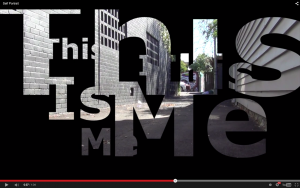On the day that we formed groups and were assigned the task of creating a “Media Artefact” for Project Brief 4, I have to admit I was quite lost. It took me a long time to wrap my head around how we were going to use academic research to produce something that was both creative and meaningful. The media idea “texts” is inherently broad, and while we thought this would serve as an advantage, it actually caused us some confusion. On the bright side, there were also a lot of interesting topics for us to explore that also happen to be incredibly relevant to today’s changing media climate.
At the beginning of the process, we had several ideas floating around and not much direction for any of them. After further research and working to improve and combine these ideas, we finally settled on a topic we were all excited about: textual adaptations. The next challenge was narrowing down the topic area, which was still too broad. We attempted this in several stages, each time taking out some aspect of the work until we whittled away our topic to a core that we could explore in depth. I think that strangely the most successful aspect of the creation process was revealed when someone in the group was having trouble. This prompted us to ask questions to clarify what we were working on, and this not only helped us to come up with new ideas and better approaches to our work, but also highlighted the collaborative strength of our group.
Once we had a solid idea of the work we wanted to include, it was a little problematic deciding how we wanted everything to be presented. We were concerned that we would not be able to efficiently present our learning through a video or audio, so we eventually decided on a website. I think our final work is strong and demonstrative of the hard work we have put in over the semester. The only area I think we could have improved upon is the overall cohesiveness of the final website. There are three core branches we focused our work on: texts, leading into adaptations with a focus on Romeo and Juliet adaptations into a range of mediums, but we could have tied everything together more clearly.
I think the major success of our final artefact is one of the things I was most concerned about at the beginning of the process; the effective integration and application of references into our work. This element of the work fell into place as we watched the different Romeo and Juliet adaptations, and thought analytically about these works. The sources we used provided a highly relevant framework upon which we were able to substantiate our ideas.
As a group, I think Lucas, Rob and I all worked really well together, supporting and expanding on each others’ ideas and ensuring everyone was tasked with something that they had a personal interest in. I also learnt a lot from working with these two talented up-and-coming media practitioners, especially in terms of thinking about and following through with creative ideas. I especially respect the work Lucas and Rob did in filming and editing the adaptations interview with professional dancer Maddie.
At the same time, I was also able to showcase my strength in research and use this to improve the academic rigour of our artefact. Working on this assignment taught me a lot about the characteristics of positive collaboration, and how this can create a platform for elevating individuals’ ideas and highlighting everyone’s best abilities.
During the weeks I spent working on this assignment, I was able to refine my research skills, in particular learning how to use the RMIT library resources. I also developed my ability to perform meaningful analysis on media texts, learning to recognise conventions and techniques in particular works to expand my understanding of media as an area of study. Finally, I discovered a lot about intricacies in the field of media adaptations.
I think that everything I learnt and the skills I developed during the brainstorming, researching, creating and editing stages of this brief will help to inform my future work and studies in media. I believe this is significant because texts are constantly evolving in the fast-paced media industry, and to have a solid understanding of this strand of media is invaluable.

